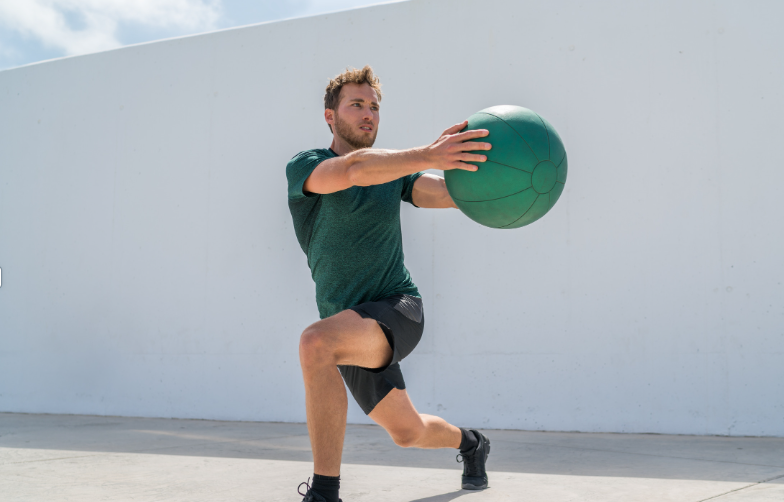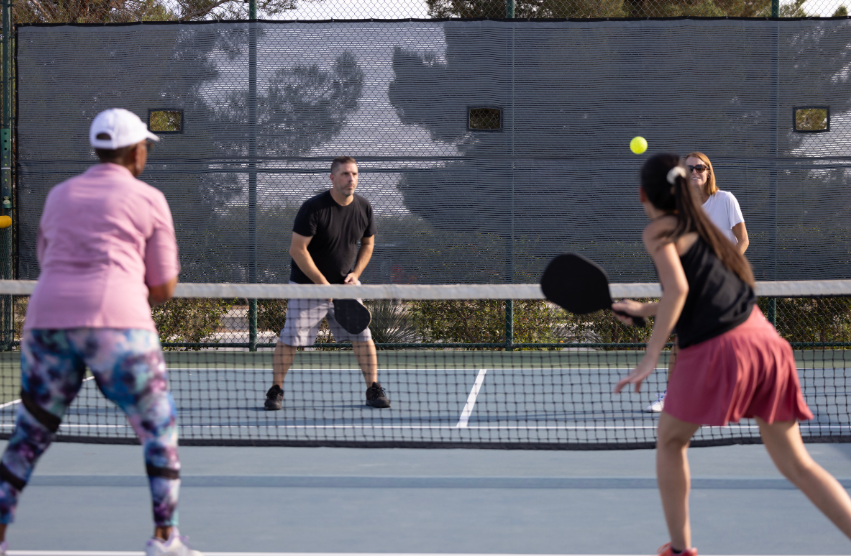Plyometric training involves exercises that cause muscles to exert maximum force in as short a time as possible, with the goal of increasing power (speed-strength). Incorporating plyometric training into your regimen can greatly enhance your pickleball game, as it can improve your speed, strength, and agility, all of which are crucial for pickleball performance.
Here are some ways you can use plyometric training for pickleball:
- Lower Body Exercises: Exercises such as jump squats, box jumps, lunge jumps, and burpees can increase your lower body power. This can translate into faster movements on the court and more powerful shots.
- Upper Body Exercises: Plyometric push-ups, medicine ball throws, and clap push-ups can help improve your upper body strength. A strong upper body can help you generate more power in your strokes and serve, and can also help you maintain good posture during long games.
- Core Exercises: Plyometric exercises like Russian twists or medicine ball slams can enhance your core strength. A strong core is important for maintaining balance and stability, which is crucial for good pickleball performance.
- Agility Drills: Plyometric agility drills such as ladder drills, lateral jumps, and single-leg hops can help you improve your agility and speed on the court. These drills can help you quickly change direction and reach shots that might otherwise be out of reach.
Here are some tips to keep in mind when incorporating plyometric training into your routine:
- Warm Up Properly: Plyometric exercises are high-intensity and can be tough on your joints and muscles. Make sure to warm up thoroughly before starting a plyometric workout.
- Use Proper Form: Make sure to perform each exercise with proper form. Poor form can lead to injuries and decrease the effectiveness of the workout.
- Start Slow: If you’re new to plyometric training, start with lower intensity exercises and gradually build up. It’s better to do fewer reps with good form than to do more reps with poor form.
- Rest and Recover: Make sure to allow your body adequate time to rest and recover after a plyometric workout. Overdoing it can lead to overuse injuries.
Here are some additional techniques:
- Depth Jumps: Start by standing on a box or step, step off, and immediately jump as high as you can when you land. This will help improve your reactive strength, which is useful when you need to move quickly on the court.
- Skater Jumps: Start by standing on one leg, jump sideways, and land on the other leg, imitating the movements of a speed skater. This exercise will help develop your lateral power, beneficial for quick side-to-side movements in pickleball.
- Tuck Jumps: From a standing position, jump as high as you can and bring your knees to your chest. This will help you improve your vertical leap and explosive strength.
- Plyo Pushups: Start in a regular pushup position, lower yourself down, and then push up explosively to lift your hands off the ground. This can help improve your upper body strength, which is necessary for powerful serves and strokes.
- Bounding: Bounding involves exaggerated running with long strides and high knee lifts, emphasizing hang time in the air. This is useful for improving stride length and power, which can help with your court coverage.
Additional tips and precautions:
- Quality over Quantity: Plyometrics are about speed and power, not about how many you can do. Ensure you perform each jump or push as explosively as possible.
- Proper Footwear: Wear good quality athletic shoes that provide adequate cushioning to absorb impact.
- Appropriate Surfaces: Do plyometric exercises on a surface that has some ‘give’, such as grass or a sprung floor. Avoid concrete or any hard surface.
- Monitor Fatigue: These exercises are intense, and if you are too fatigued, your form may suffer, increasing the risk of injury.
- Rest between Workouts: Plyometric training causes muscular fatigue and microscopic damage to the muscle fibers. Your muscles need time to repair and strengthen between workouts.
Remember, pickleball requires a combination of skills, including agility, balance, speed, and power. While plyometrics can help enhance power and speed, it is only one piece of the puzzle. A well-rounded training program, along with specific skills practice, will give you the best performance on the court.






